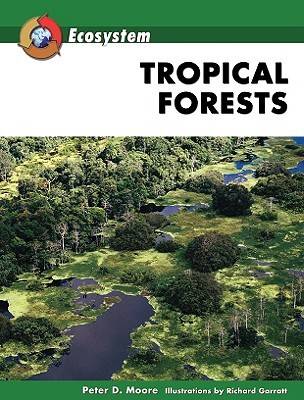Ecosystem
7 total works
This title explores the ecology, biology, chemistry, history, and economics of the forest, which is home to much of our favourite flora and fauna. Topics covered include: the role of the temperate forest in modern economy and future prospects for sustainable forest management.
The deep sea is the last great unexplored environment on Earth. Drawing together elements of biology, chemistry, geology, economics, and science history, this book offers a comprehensive survey of this vast ecosystem. Coverage also explores the many interactions between humans and the sea.
The geography and geology of tundra habitats have many physical and climatic constraints. Yet while biodiversity is low, ecosystems still exist in this environment. Much of the megafauna that we are familiar with - such as wooly mammoths and giant elk - inhabited tundra environments, and much of what we know of early human activity took place in this harsh ecosystem. ""Tundra"" presents a thorough overview of the tundra habitat - past, present, and future. Unique qualities of life, such as slow-growing dwarf trees and animals exhibiting large bodies and small ears, are described and discussed in the context of adaptation and survival strategy. The history and prehistory of tundra are also explored. Past and present exploitation of tundra ecosystems is diverse. There is abundant mineral, gas, and oil wealth in these areas, and ecotourism and winter sports are abundant. As use of tundra ecosystems expands, problems connected with climate change, waste disposal, and other threats to the ecosystem must be addressed. ""Tundra"" examines these issues and more, in an easy-to-use format perfect for any science library or classroom.
Wetlands are comprised of a wide range of habitats - from saline, coastal marshes and mangrove swamps to the rain-fed mires of the world's wet mountains. This volume is a comprehensive account of their biological and physical richness and how their complex ecological systems function.
Tropical forests are the most diverse and complex of the world's ecosystems. They are also among the most vulnerable and threatened habitats on Earth. Their value to humanity is immense through their influence on the atmosphere and global climate. ""Tropical Forests"" explores the great biodiversity of forests, from microbes to mammals, as well as the adaptations of organisms to their environment and to the other species surrounding them. The interactions between organisms and their physical surroundings are examined, as are the processes linking the two into an integrated ecosystem.This accessible book portrays the importance of tropical forests with a balance of factual accuracy and a sense of wonder. The chapters are arranged in a logical structure, beginning with the physical setting, including the geography, geology, and climatic conditions of tropical forests. Diagrams, full-color photographs and illustrations, and informative sidebars highlight the function, value, and sheer beauty of this remarkable ecosystem.

